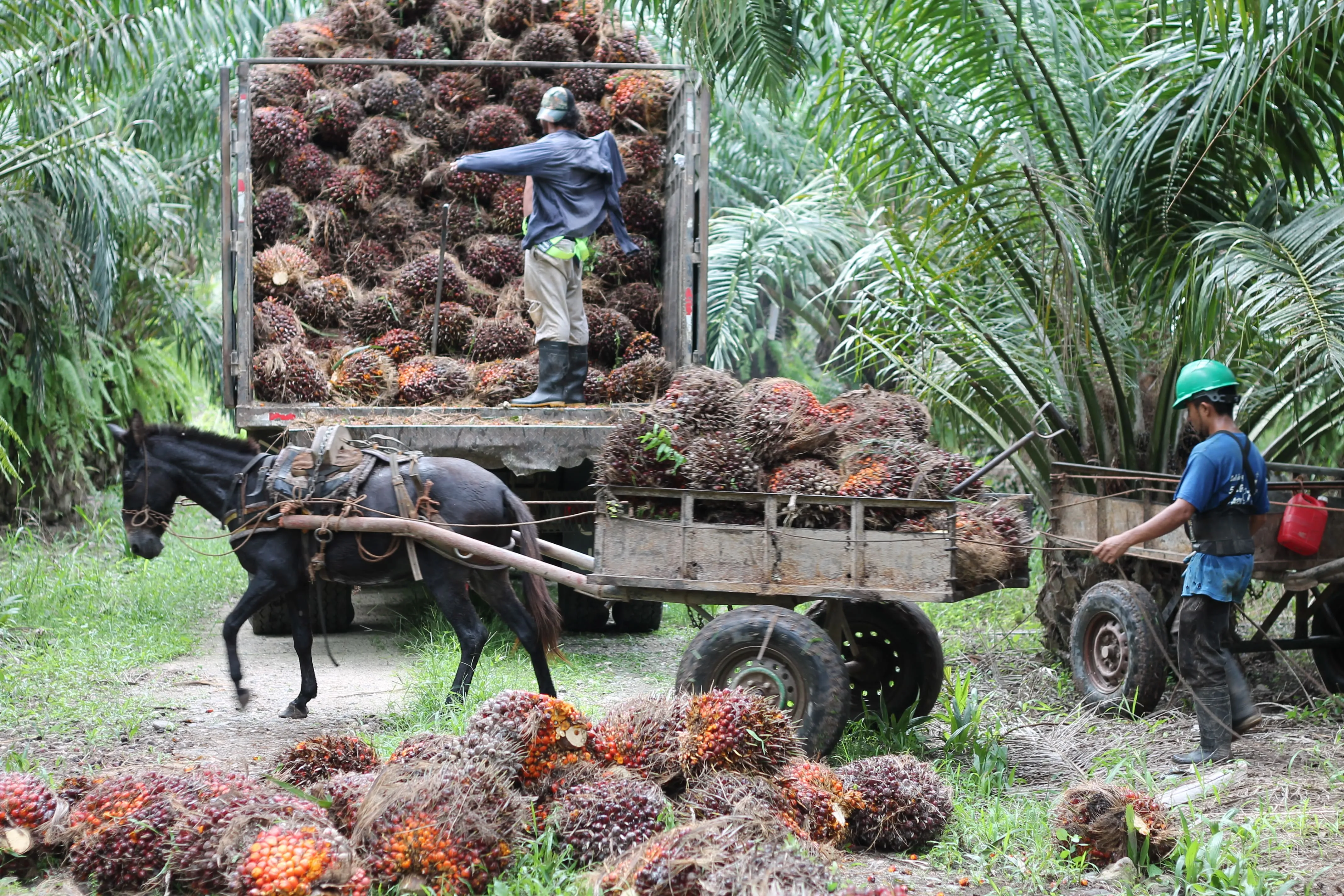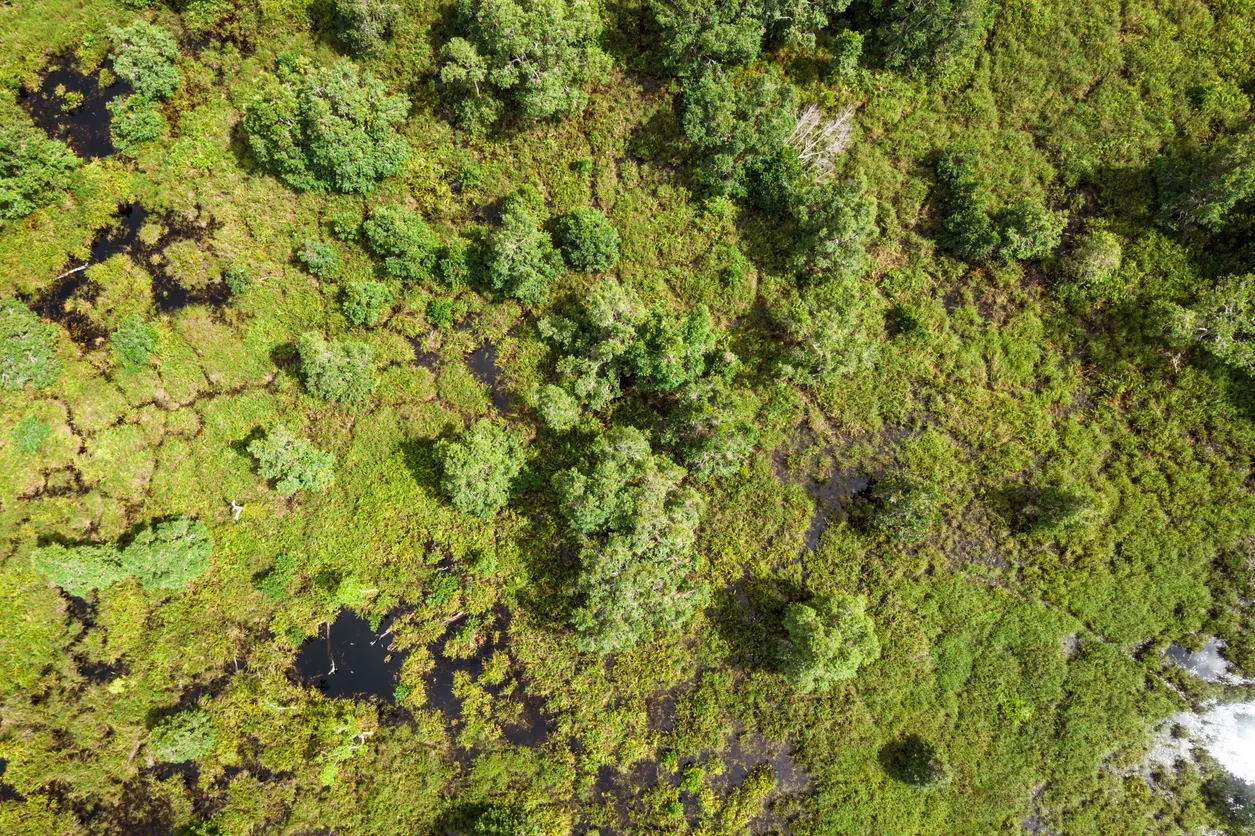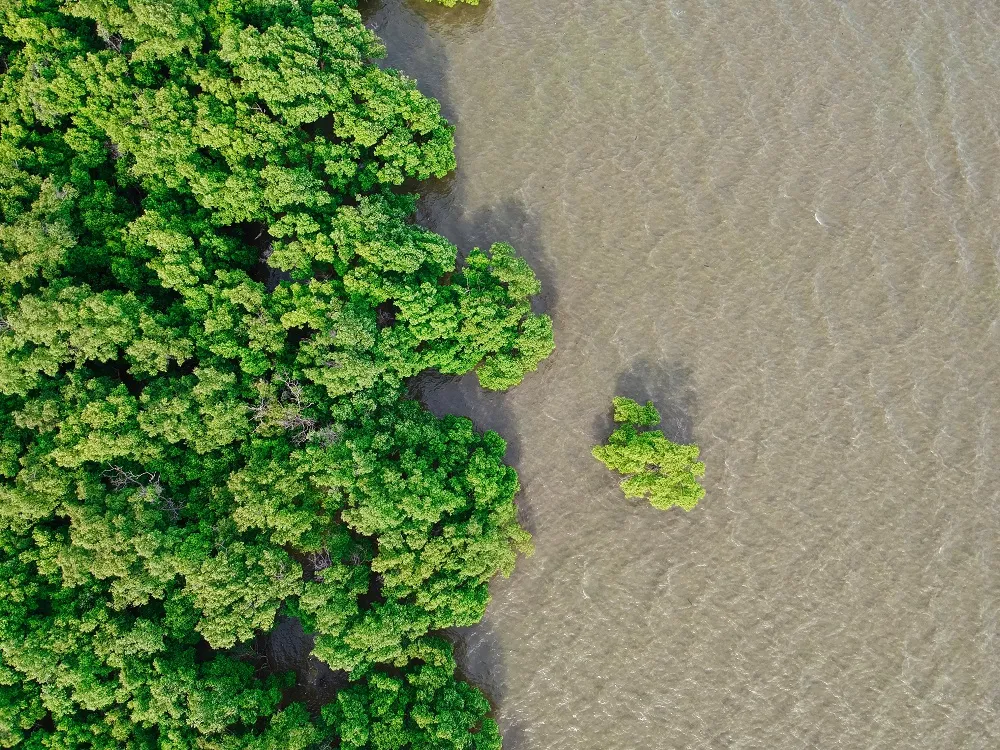
Beyond land: rethinking the HCV Approach for aquatic ecosystems
Experts are looking at how the HCV Approach could be adapted to help better protect ocean and river ecosystems.
Originally developed to improve conservation in terrestrial ecosystems, the HCV Approach is increasingly recognised as a valuable method for preserving essential water resources and habitats
Some of the most threatened ecosystems on the planet are freshwater areas – our rivers, lakes, the water networks providing essential services to communities living both near and far. Our attention on the health of our oceans has also grown in the last decades, as pollution, overfishing, and climate change are changing the waters we depend on. With about 75 per cent of major marine fish stocks exhausted or overexploited, the food security and livelihoods of millions of people face an uncertain future.
But how can the protection of freshwater and marine ecosystems be improved using some of the methods that have been effective for conservation in other contexts? The HCV Approach can provide some of the answers, experts agree, by helping to tackle many of the harmful practices affecting our waters.
Earlier this summer, the HCV Summit brought together a panel of experts to discuss how the HCV Approach can be adapted to water ecosystems, and what challenges still need overcoming. It wasn’t the first conversation on the topic – in 2015, a scientific paper looked at how HCVs could be adapted and applied to freshwater ecosystems.
“The HCV Approach is flexible and adaptable, making it suitable to aquatic habitats. Freshwater and marine ecosystems, like their land-based counterparts, are valued due to their various qualities from community importance to rare and endangered species,” says Alexis Morgan, Global Water Stewardship Lead at WWF, who moderated the session at the Summit and also co-authored the 2015 paper. “The Approach covers these various aspects making it a suitable frame across terrestrial, marine and freshwater systems,” says Morgan.
According to Robin Abell, freshwater lead at Conservation International, even though High Conservation Values might not specifically be mentioned in freshwater ecosystem conservation, HCVs are invoked, especially HCV 2 (landscape-level ecosystems) and HCV 5 (community needs). “There has been a real upsurge in attention around critical natural capital,” said Abell during the Summit. “Many companies are looking to invest in Nature-based Solutions (NbS) for water security to offset their water use or reduce their risks.” For Abell, an advantage of adapting the HCV Approach for use in water contexts is that the methodology is comprehensive and that it doesn’t prioritise one value over another. This should help private sector actors who are interested in investing in healthy watersheds to think about their impact more holistically as they try to reduce their water risks.
The HCV Approach can be a useful tool for protecting ecosystems in the Amazon. Carlos Durigan from WCS Brazil explained during the HCV Summit that the Approach could support local governments have a fresh, more holistic vision for aquatic ecosystem management in the region and their connection to land and could also better inform decision-making processes. The HCV Approach’s focus on community engagement could also improve the participation of local communities, Indigenous Peoples, and other stakeholders in monitoring how industries are affecting critical ecosystems.
Mariana Aziz, director of Oceana’s Transparency Campaign in Mexico thinks that the HCV Approach is suited for policies aimed at sustainable fisheries. “HCV characteristics can be well integrated into policy,” said Aziz at the HCV Summit. “Our data on Marine Protected Areas integrates the HCV principles. These areas are sometimes created very far away from the shore, but they support important ecosystems, and are also culturally very valuable – many coastal communities depend on fishing, especially for artisanal fisheries.”
Aziz explains that the HCV methodology for identifying threats to ecosystems on land could be applicable for marine HCVs too. Oceana’s work on traceability focuses on having fisheries demonstrate the legality of their products along the supply chain. “Part of the HCV Approach can be integrated into these kind of traceability schemes using public policies – creating common ground for fisheries lacking access to private schemes and a level playing field with private actors.”
Gaps in data are still hampering the adaptation of the HCV Approach for aquatic contexts. “In a marine context, it’s harder to generate the same amount of data as on land,” said Sophie Benbow, head of marine at Fauna and Flora International during the Summit. “We may have data collection in place, but very few fisheries have access to that.” Benbow does see the value of using the HCV Approach, especially when it comes to standardising the type of data required and for engaging governments in spatial planning processes for marine conservation, but stresses that there is more work needed to include ecological and cultural aspects for seascape protection.
“The HCV Approach is neither easier, nor more difficult, to be applied in aquatic contexts – rather, we just have fewer examples to date of its use in freshwater and marine systems,” says WWF’s Morgan. “Nevertheless, as a first step, it makes sense to build off of examples that cross over – for example, wetlands in forested areas often harbour High Conservation Values.”
Despite challenges, the HCV Network continues to advance its work on aquatic ecosystems. This July, the Secretariat signed a MoU with the Aquaculture Stewardship Council (ASC), the world’s top certifier of farmed seafood, to work together on facilitating the implementation of the HCV Approach. Through this MoU, the Network aims to support the ASC in developing tailored and practical HCV guidance for fish farming companies operating in freshwater and marine ecosystems. Testing the HCV Approach in aquatic ecosystems will gradually provide the answers to the current challenges experts face and will deepen knowledge of our aquatic resources and what is required for their long-term conservation.
The Secretariat is also working to secure funding for piloting the HCV Approach in the context of seafood farming, as well as wetland conservation and restoration in Central and South America, in collaboration with organisations like WWF Chile, WWF Mesoamerica and Pronatura Noreste.
For more details on our work or enquiries on collaborations, please get in touch with Ana Sofia Lorda sofia@hcvnetwork.org
Related Posts
Protegiendo el carácter ambiental y social único del sureste de México con el Enfoque de AVC
Hace dos años, HCVN y FEMEXPALMA firmaron un acuerdo de cooperación para promover prácticas sostenibles de producción de aceite de palma a través de la conservación, el desarrollo de capacidades y la divulgación. Hoy, el involucramiento de los pequeñosproductores se ha vuelto esencial en la protección de los Altos Valores de Conservación.
Read MoreProtecting southeastern Mexico’s unique environmental and social character using the HCV Approach
Two years ago, HCVN and FEMEXPALMA signed a cooperation agreement to promote sustainable practices in palm oil production through conservation, capacity building, and outreach. Today, the contributions of small-scale producers have become essential in the protection of High Conservation Values.
Read MoreDébloquer des incitations pour des solutions fondées sur la nature avec les communautés forestières
L'outil Forest Integrity Assessment (FIA) est une approche de liste de contrôle simple et conviviale conçue pour permettre aux gestionnaires de terres et à d'autres non-biologistes d'effectuer des estimations rapides et efficaces de l'état de la biodiversité forestière.
Read MoreOur Partnerships
Alongside many global initiatives, our work with partners promotes practices that help meet the global Sustainable Development Goalsand build a greener, fairer, better world by 2030.


Femexpalma
In April 2022, FEMEXPALMA and the HCV Network signed a 5-year cooperation agreement to promote sustainable production of palm oil in Mexico. FEMEXPALMA is a Mexican independent entity that represents palm production at the national level and promotes the increase of productivity in a sustainable way.
With global markets becoming stricter, for Mexican producers to be able to export to key markets such as the European Union, they must meet strict requirements such as certification by the Roundtable on Sustainable Palm Oil (RSPO). To be certified by RSPO, the HCV Approach must be applied prior to the establishment of any new oil palm plantations. With this cooperation agreement, the HCV Network will support FEMEXPALMA’s members and allies to design better strategies to identify, manage and monitor High Conservation Values and support smallholders to achieve RSPO certification and implement good agricultural practices.
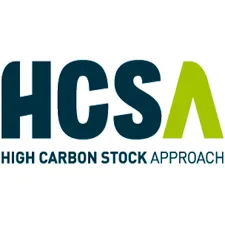

High Carbon Stock Approach
The High Carbon Stock Approach (HCSA) is an integrated conservation land use planning tool to distinguish forest areas in the humid tropics for conservation, while ensuring local peoples’ rights and livelihoods are respected.
In September 2020, HCV Network and the HCSA Steering Group signed a five-year Memorandum of Understanding (MoU) to strengthen their collaboration to conserve forests and uphold community rights in tropical forests. The HCS and HCV Approaches are cornerstones of corporate no deforestation and conservation commitments, and increasingly for actors working at different scales. The collaboration aims to further support effective implementation of these commitments through increased uptake of the HCV and HCS tools.
Through this MoU, HCSA and HCVRN are pursuing two main strategic goals:
- Strive to promote the application of the two approaches in tropical moist forest landscapes and explore further opportunities for collaboration.
- Ensure that, where the two approaches are applied together, this happens in a coordinated, robust, credible, and efficient manner, so that HCS forests and HCVs are conserved, and local peoples’ rights are respected.


World Benchmarking Alliance
From May 2022, the HCV Network is an ally at the World Benchmarking Alliance (WBA). WBA is building a diverse and inclusive movement of global actors committed to using benchmarks to incentivise, measure, and monitor corporate performance on the SDGs, and will assess and rank the performance of 2,000 of the world’s most influential companies against seven systems of transformation by 2023.
The scope of WBA’s circular transformation was expanded to cover nature and biodiversity as recognition of the need for greater understanding, transparency and accountability of business impact on our environment. The WBA Nature Benchmark was launched in April 2022, which will be used to rank keystone companies on their efforts to protect our environment and its biodiversity. As HCV Areas are recognised as key areas important for biodiversity, companies that publicly disclose their actions to identify and protect HCVs will contribute to the assessment of their performance against the benchmark.


Taskforce on Nature-related Financial Disclosures - TNFD
The Taskforce on Nature-related Financial Disclosures (TNFD) is a global, market-led initiative, established with the mission to develop and deliver a risk management and disclosure framework for organizations to report and act on evolving nature-related risks, with the aim of supporting a shift in global financial flows away from nature-negative outcomes and toward nature-positive outcomes.
In April 2022, the HCV Network joined the TNFD Forum. The TNFD Forum, composed of over 400 members, is a world-wide and multi-disciplinary consultative network of institutional supporters who share the vision and mission of the task force.
By participating in the Forum, the HCV Network contributes to the work and mission of the taskforce and help co-create the TNFD Framework which aims to provide recommendations and advice on nature-related risks and opportunities relevant to a wide range of market participants, including investors, analysts, corporate executives and boards, regulators, stock exchanges and accounting firms.


Aquaculture Stewardship Council
The Aquaculture Stewardship Council (ASC) is the world’s leading certification scheme for farmed seafood – known as aquaculture – and the ASC label only appears on food from farms that have been independently assessed and certified as being environmentally and socially responsible. In 2021, the HCV Network and ASC formalised their collaboration through a Memorandum of Understanding (MoU). The MoU represents the first step in a fruitful relationship aimed at conserving HCVs in aquaculture. Although, existing guidance on the use of the HCV Approach currently focuses mainly on forestry and agriculture, the HCV Approach is however generic, and in principle also applicable to aquatic production systems. Through this MoU, this is recognised by the Aquaculture Stewardship Council (ASC) in their ASC farm standard, in which the protection of HCV areas is mentioned in the context of expansion


Accountability Framework Initiative
The Accountability Framework initiative (AFi) is a collaborative effort to build and scale up ethical supply chains for agricultural and forestry products. Led by a diverse global coalition of environmental and human rights organizations, the AFi works to create a “new normal” where commodity production and trade are fully protective of natural ecosystems and human rights. To pursue this goal, the coalition supports companies and other stakeholders in setting strong supply chain goals, taking effective action, and tracking progress to create clear accountability and incentivize rapid improvement. In July 2022, the HCV Network joined AFi as a Supporting Partner. AFi Supporting Partners extend the reach and positive impact of the AFi by promoting use of the Accountability Framework by companies, industry groups, financial institutions, governments, and other sustainability initiatives, both globally and in commodity-producing countries.


Biodiversity Credit Alliance
The Biodiversity Credit Alliance (BCA) is a global multi-disciplinary advisory group formed in late 2022. Its mission is to bring clarity and guidance on the formulation of a credible and scalable biodiversity credit market under global biodiversity credit principles. Under these principles, the BCA seeks to mobilize financial flows towards biodiversity custodians while recognising local knowledge and contexts.
The HCVN joined the BCA Forum in August 2023 to learn more from the many organizations already coming together to find effective pathways to opening up credit-based approaches, and how to contribute our knowledge and experience of years of working in a practical way, often with global sustainability standards and their certified producers, to protect what matters most to nature and people.
.webp)
.webp)
Nature Positive Forum
The Nature Positive Initiative is a group of stakeholders coming together to find ways to unlock success and achieve Nature Positive - a global societal goal defined as ‘halt and reverse nature loss by 2030 on a 2020 baseline, and achieve full recovery by 2050’, in line with the mission of the Kunming-Montreal Global Biodiversity Framework.
Core work includes preserving the integrity of ‘Nature Positive’ as a measurable 2030 global goal for nature for business, government, and other stakeholders, and providing the tools and guidance necessary to allow all to contribute. The initiative also advocates for the full implementation of the Kunming-Montreal Global Biodiversity Framework by governments and other stakeholders.
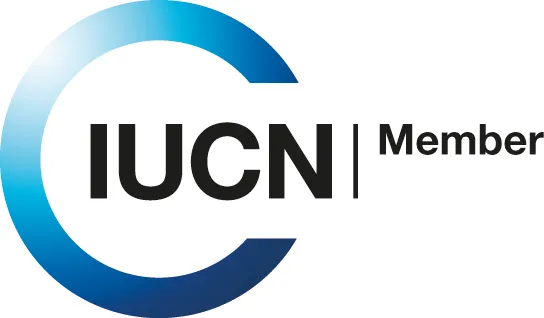

IUCN
IUCN is a membership Union uniquely composed of both government and civil society organisations. It provides public, private, and non-governmental organisations with the knowledge and tools that enable human progress, economic development, and nature conservation to take place together.
Created in 1948, IUCN is now the world’s largest and most diverse environmental network, harnessing the knowledge, resources and reach of more than 1,400 Member organisations and around 15,000 experts. It is a leading provider of conservation data, assessments, and analysis. Its broad membership enables IUCN to fill the role of incubator and trusted repository of best practices, tools, and international standards.
IUCN provides a neutral space in which diverse stakeholders including governments, NGOs, scientists, businesses, local communities, indigenous peoples’ organisations, and others can work together to forge and implement solutions to environmental challenges and achieve sustainable development.
Working with many partners and supporters, IUCN implements a large and diverse portfolio of conservation projects worldwide. Combining the latest science with the traditional knowledge of local communities, these projects work to reverse habitat loss, restore ecosystems, and improve people’s well-being.

Get Involved
Our Mission as a network is to provide practical tools to conserve nature and benefit people, linking local actions with global sustainability targets.
We welcome the participation of organisations that share our vision and mission to protect and enhance High ConservationValues and the vital services they provide for people and nature. By collaborating with the Network, your organisation can contribute to safeguarding HCVs while gaining valuable insights and connections that support your sustainability goals.
We are seeking collaborative partners to help expand and enhance our work, as well as talented professionals who can join the growing Secretariat team, and for professionals who can contribute to the credible identification of High Conservation Values globally.
Join us in securing the world’s HCVs and shaping a sustainable future.
